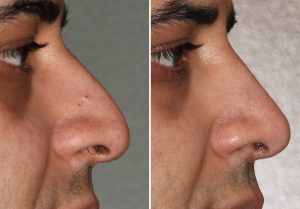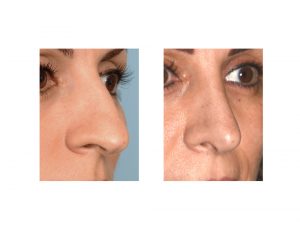As the U.S. population continues to become increasingly multicultural, one of the increasing ethnic groups is that from the Middle Eastern region. This is a geographic term that does not have a true precise meaning as it can vary based on which countries one chooses to include in the region. Most commonly, many would include the countries that surround the Gulf Sea as well as that of Northern Africa.
While the Middle Eastern region is a blend of many cultures, there are certain nasal characteristics that are commonly seen. The overlying skin is almost always thick and heavy, a large dorsal hump is present, the nasal tip is ill-defined and bulbous, and the columella is frequently short. These characteristics give the appearance of a long and plunging nose with an acute nasolabial angle.
The Middle Eastern nose, like all ethnic rhinoplasties, poses challenges based its thick skin and cartilaginous make-up. But beyond the anatomy of the nose, it is important to have clear communication with the patient about their nasal goals. When the plastic surgeon and the patient have different ethnic and cultural backgrounds, it is easy to have objectives that are unintentionally different. Computer imaging and multiple consults can help to prevent this communication gap.

Structural support to the tip and the middle vault is essential. The thick skin of the nasal tip can make it challenging to achieve definition and a more upright position with an increased nasolabial angle. Septal grafts to the columella are always needed to support the large and heavy skin sleeve. Tip grafts are usually beneficial to create more definition through tip skin which has been slightly defatted. The septum can provide more than enough graft material and almost always needs work anyway as it is frequently deviated and off midline.

Alar and nostril narrowing by excising skin at the sill or base is often needed. One should not hesitate to do so when indicated as adverse scarring is rarely seen.
Rhinoplasty in the Middle Eastern patient is challenging but successful results and a happy patient can usually be achieved. The use of well known structural support principles through an open approach are important intraoperative maneuvers. Preoperative planning with an understanding of the patients aesthetic objectives is just as important in any form of ethnic rhinoplasty.
Dr. Barry Eppley
Indianapolis, Indiana


